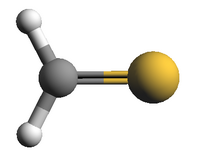|
Very accurate terahertz transition frequencies were
added with respect to the second entry from Feb. 2008.
These were taken from
(1) H. S. P. Müller, A. Maeda, S. Thorwirth,
F. Lewen, S. Schlemmer, I. R. Medvedev, M. Winnewisser,
F. C. De Lucia, and E. Herbst,
2019, Astron. Astrophys. 621, Art. No. A143.
With respect to the Feb. 2006 entry, extensive millimeter
and submillimeter transitions were published by
(2) A. Maeda, I. R. Medvedev, M. Winnewisser, F. C. De Lucia,
E. Herbst, H. S. P. Müller, M. Koerber, C. P. Endres,
and S. Schlemmer,
2008, Astrophys. J. Suppl. Ser. 176, 543.
In addition, ground state combination differences were
taken from
(3) D. J. Clouthier, G. Huang, A. G. Adam, and A. J. Merer,
1994, J. Chem. Phys. 101, 7300.
The data have been kindly provided by the first author.
For the first entry, several microwave and millimeter-wave
transitions frequencies were taken from
(4) D. R. Johnson, F. X. Powell, and W. H. Kirchhoff,
1971, J. Mol. Spectrosc. 39, 136;
some of these were already reported in
(5) D. R. Johnson and F. X. Powell,
1970, Sience 169, 679.
Few additional lines were taken from
(6) V. Beers, G. P. Klein, W. H. Kirchhoff, and D. R. Johnson,
1972, J. Mol. Spectrosc. 44, 553.
The J = 1 – 1
transition was reported by
(7) B. Fabricant, D. Krieger, and J. S. Muenter,
1977, J. Chem. Phys. 67 1576.
Pure rotational transitions obtained by FT-FIR
spectroscopy were also used in the fit. The data set
is described by
(8) D. McNaughton and D. N. Bruget,
1993, J. Mol. Spectrosc. 159, 340.
The transition frequencies have been kindly provided by
the first author. Several of these were omitted in (1)
because of more accurate data. Some data in (4) and (6)
were replaced by more accurate data in (2) from (2).
Details on the data and parameter sets are available in (1).
R-branch transitions with uncertainties larger
than 50 kHz have not been merged.
Predictions with uncertainties of less than 1 MHz
should be sufficiently reliable.
The dipole moment was measured in (7).
At low temperatures, it may be necessary to discern between
ortho-H2CS and para-H2CS.
The ortho states are described by Ka odd,
the para states by Ka even.
The nuclear spin-weights are 3 and 1 for ortho-H2CS
and para-H2CS, respectively.
The JKaKc = 111
is the lowest ortho state.
It is 10.2818 cm–1 above ground.
Dec. 2011: Separate
para and
ortho predictions are available along with separate
para and
ortho partition function values.
The 1H hyperfine splitting may be resolved at low temperatures,
low frequencies, and for low values of J. Therefore, a separate
hyperfine calculation is provided up to J = 7
for transitions with ΔJ = 0 and
Ka = 1 along with separate
ortho partition function values.
|
